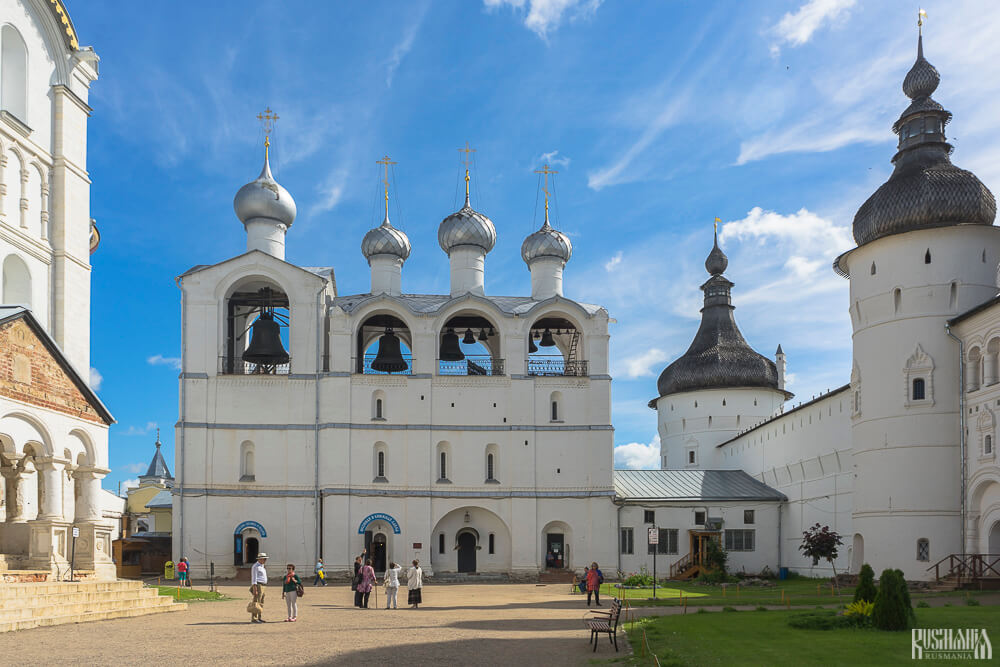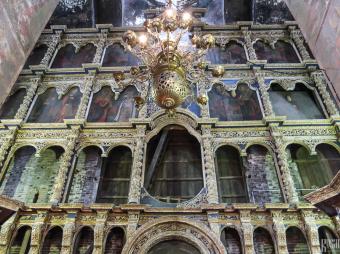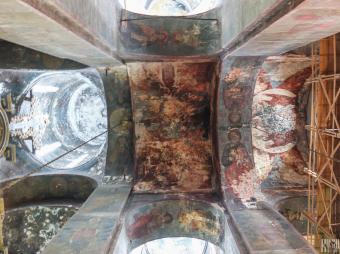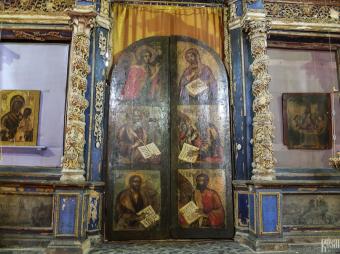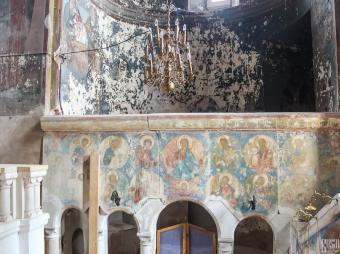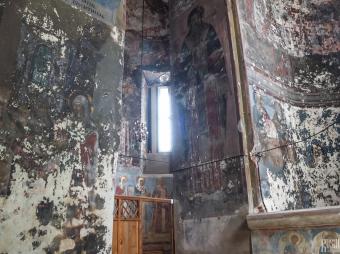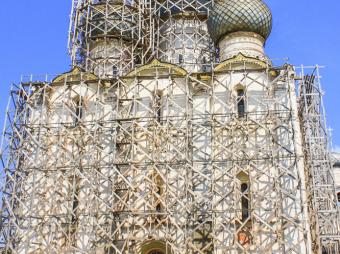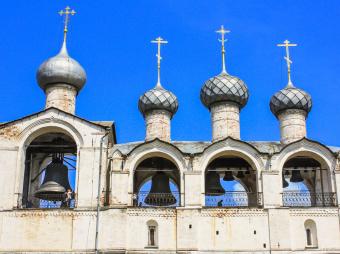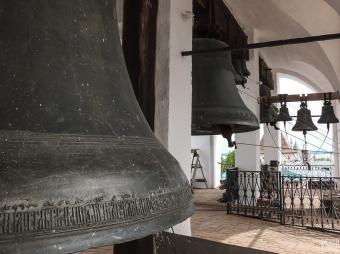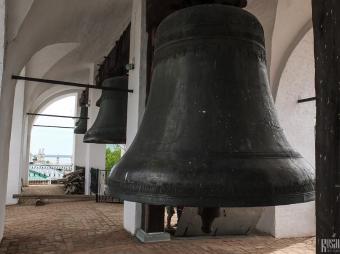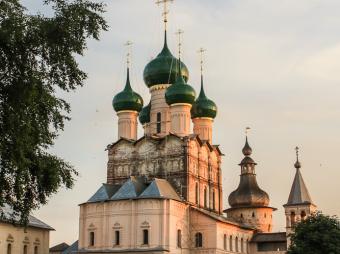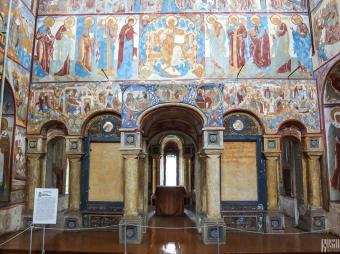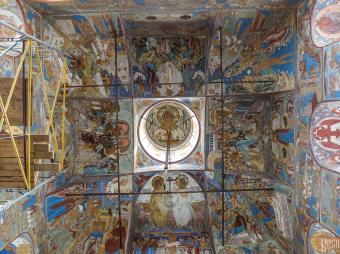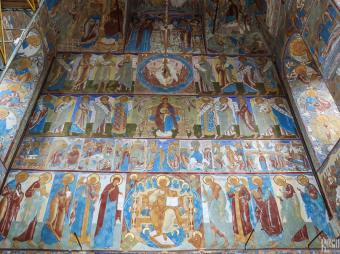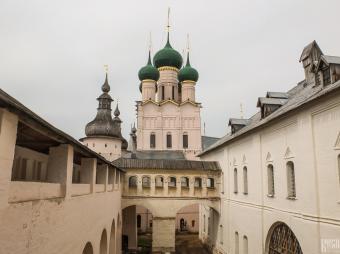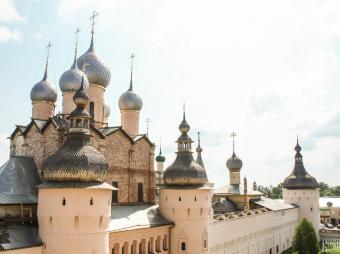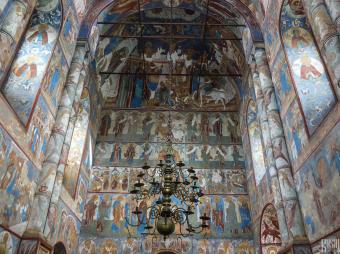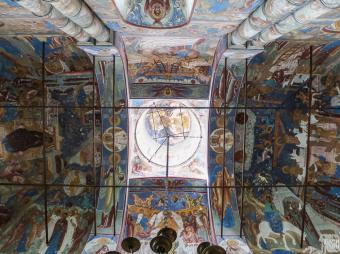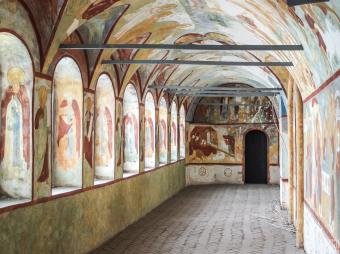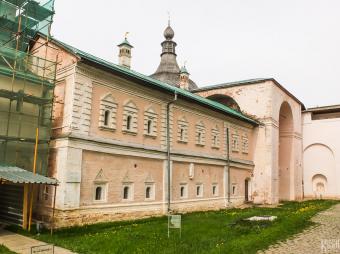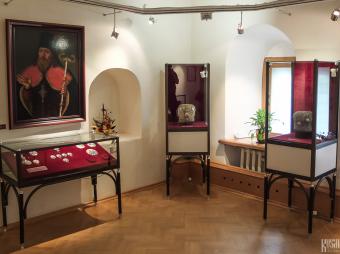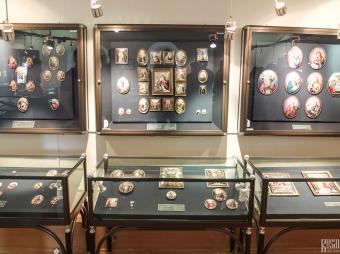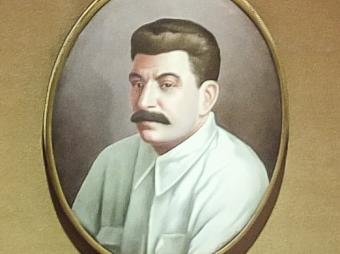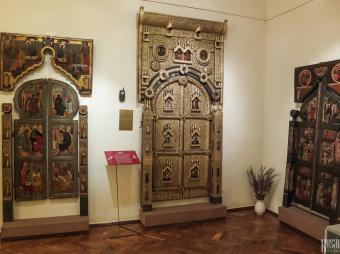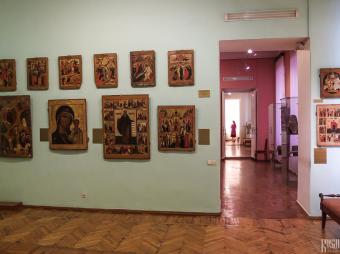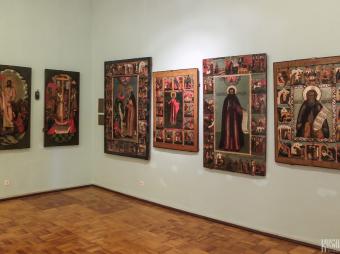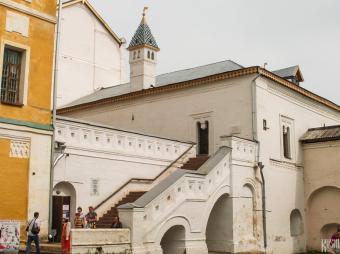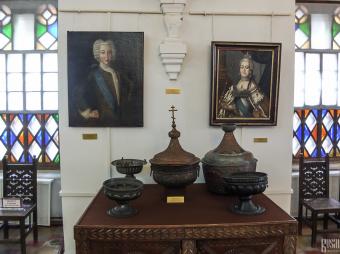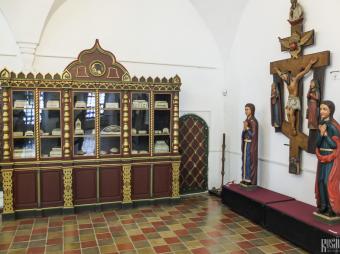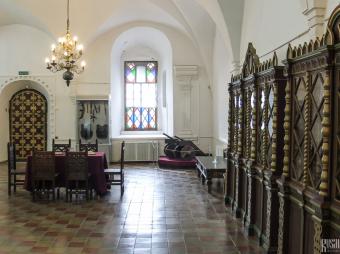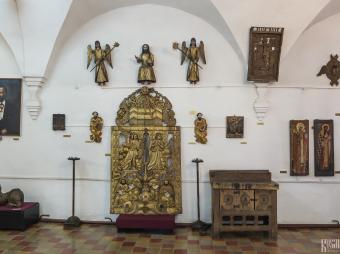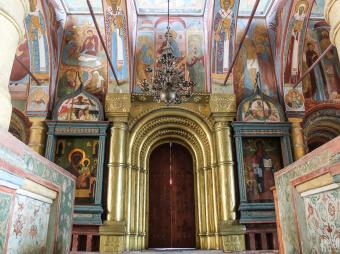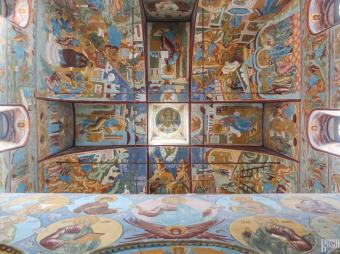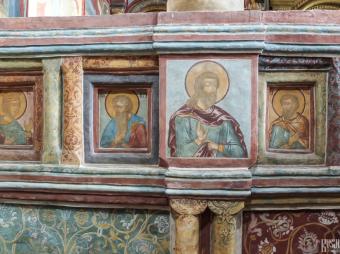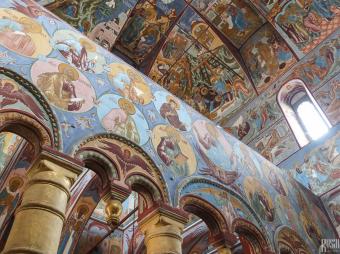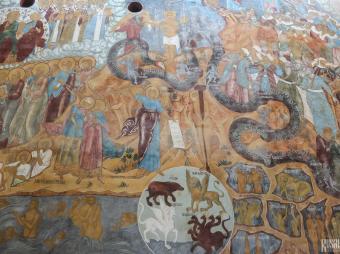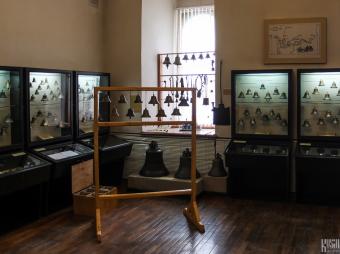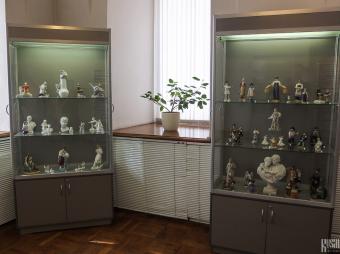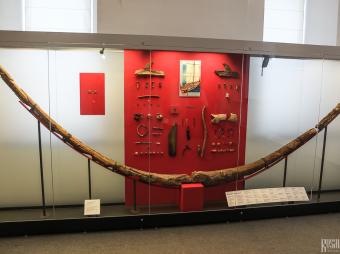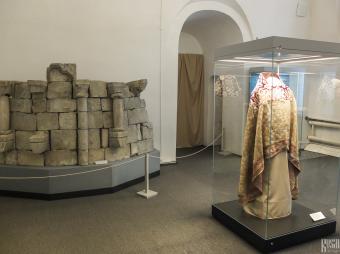In the Historical Centre
Rostov Kremlin

Rostov's most famous sight is of course its Kremlin which is located in the very centre of the city. It was built between 1670 and 1683 on the orders of Metropolitan Iona Sysoevich of Rostov and Yaroslavl to serve as a new residence for himself. Even though the strong fortified walls and 11 towers were really more for decorative purposes rather than defensive ones, the new residence nevertheless started to be referred to as a kremlin.
After the Rostov and Yaroslavl Eparchy was reorganised as the Yaroslavl and Rostov Eparchy in the late 18th century, the seat of the eparchy moved to Yaroslavl and the kremlin began to fall into disrepair. This trend was only halted in 1883 when a group of merchants decided to establish a Museum of Church Antiquities on its territory. In 1918, after the Revolution, the kremlin became state property and a museum which existed under several names until it became known as the Rostov Kremlin State Museum Reserve in 1995. Today it remains state property although Patriarch Kirill has been leading the calls for it to be returned to the Russian Orthodox Church to be used as a monastery.
A ticket must be bought to enter its territory and individual tickets must be bought to visit each of its exhibitions. Inside the kremlin is separated into three parts: Cathedral Square, the central part and the Metropolitan's Gardens. The kremlin is especially beautiful when viewed from the shores of Lake Nero and all its churches' domes are visible, making it look like something out of a Russian fairy-tale.
Dormition Cathedral
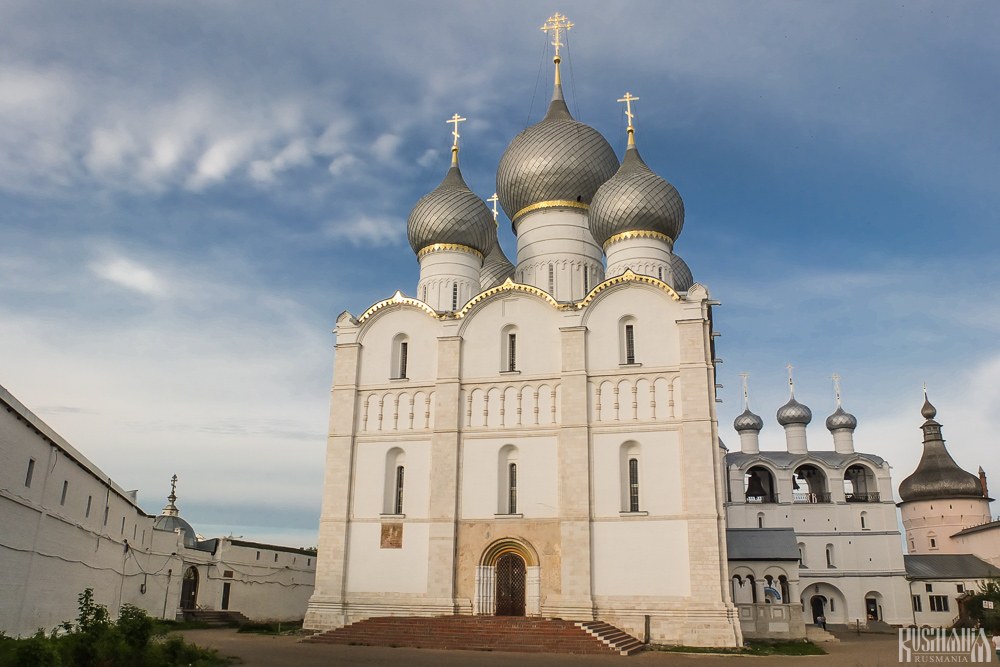
The Cathedral Square section of the Kremlin, which is its most northern part, is dominated by the kremlin's main cathedral - the Dormition Cathedral. The current cathedral dates from between 1508 and 1512 and is the fourth incarnation to stand here. The first version was a wooden church erected by St Theodore, Bishop of Rostov and Suzdal, in the 10th century. The second was a stone replacement which stood from 1160 to 1204 until it was destroyed by fire to be replace by the third version which stood from the first half of the 13th century until it too was destroyed by fire in 1408. The white stone cathedral from base to cross stands at a massive 60 metres and its five domes stand on tall tholobates and are covered with tin tiles in the traditional form. Around two-thirds up, the building is decorated with ornamental engravings which run around the cathedral, this 'belt' is typical for Rostov church architecture, an influence from Moscow-style architecture. Despite its recent restoration work the cathedral still manages to retain its ancient look. Inside most of its frescos have faded or been completely lost and although the baroque-style iconostasis frame dating from the 1730s remains, its icons have been removed.
Next to the cathedral is a massive belfry which was constructed in the 1680s. Out of all of its 15 bells the largest is known as Sysoy after Metropolitan Jonah's father and weighs in at 2000 poods (almost 33 tonnes). The Sysoy bell was cast in 1688 and a whole new tower had to be built onto the belfry to house it. The range of bells creates an especially harmonious sound for which Rostov has become famous.
St John the Theologian's Gate-Church
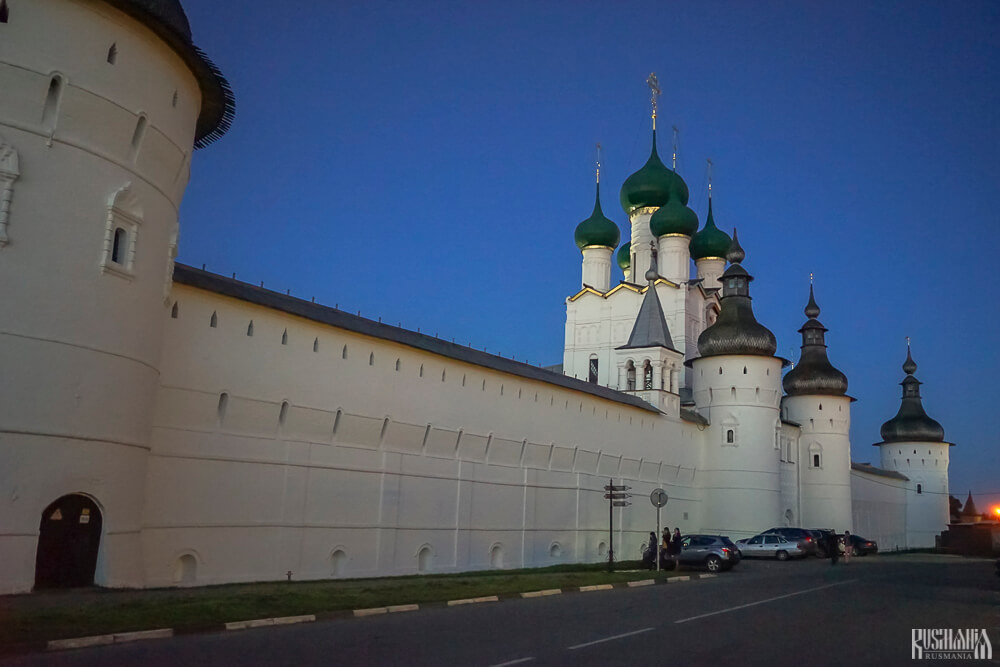
Most of the kremlin's buildings are located in the central part around the pond. The main entrance into this part of the kremlin from the city is served by St John the Theologian's Gate-Church which was built in 1683 into the walls of the kremlin. On the outside of the kremlin the church is flanked by two towers which also form part of the Holy Gates. The church's beautiful frescoes inside, which also date from 1683, depict the life of St John the Theologian and St Abraham (Avraami) of Rostov.
Hodegetria Icon Church (Baroque and Rococo Exhibitions)
![]()
In the north-western corner of the kremlin's central part stands the Hodegetria Icon Church. Out of all the kremlin's churches this was the last to be built, having been constructed between 1692 and 1693 under Jonah's successor as metropolitan. It is rectangular in form with a single tiled-dome on the raised part of the building in the centre. It is an example of the Moscow baroque architectural style. Outside it is decorated with a pattern of triangles which gives the effect of reliefs from afar. The building now houses an exhibition on the era of baroque and rococo architectural styles.
Resurrection of Christ Gate-Church
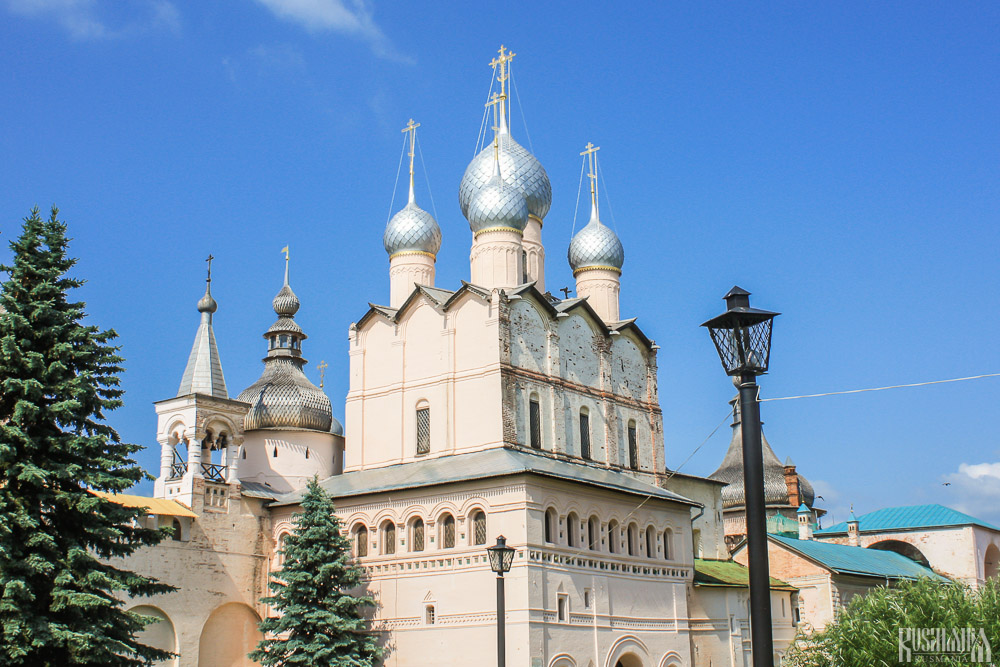
The Resurrection of Christ Gate-Church is built over the gate which connects Cathedral Square with the central part of the kremlin. It dates from 1670 and was also constructed as part of Jonah's building programme. Like the St John the Theologian's Gate-Church, the Resurrection Church-Gate comprises two towers forming the gate on the outside of the kremlin and a closed gallery on the inside, but instead of green domes, this church has grey ones.
Judicial Prikaz (Museum of Finift)
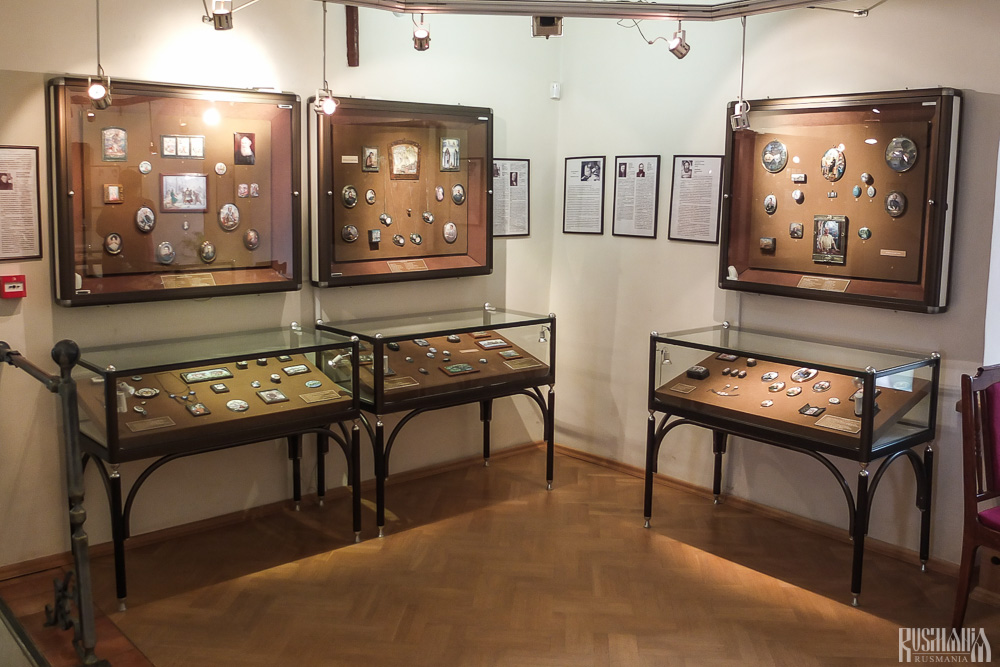
In the corner between the Resurrection of Christ Gate-Church and the 'House on the Cellar' ('Dom na Pogrebakh'), which is now a hotel, is the building known as the Judicial Prikaz which dates from 1650 and 1660 and was originally used as the local administration of Rostov. Today it holds the Museum of Finift - copper decorated with enamel for which Rostov is famous.
Samuilov Building (Art Gallery and Ancient Russian Culture Exhibition)
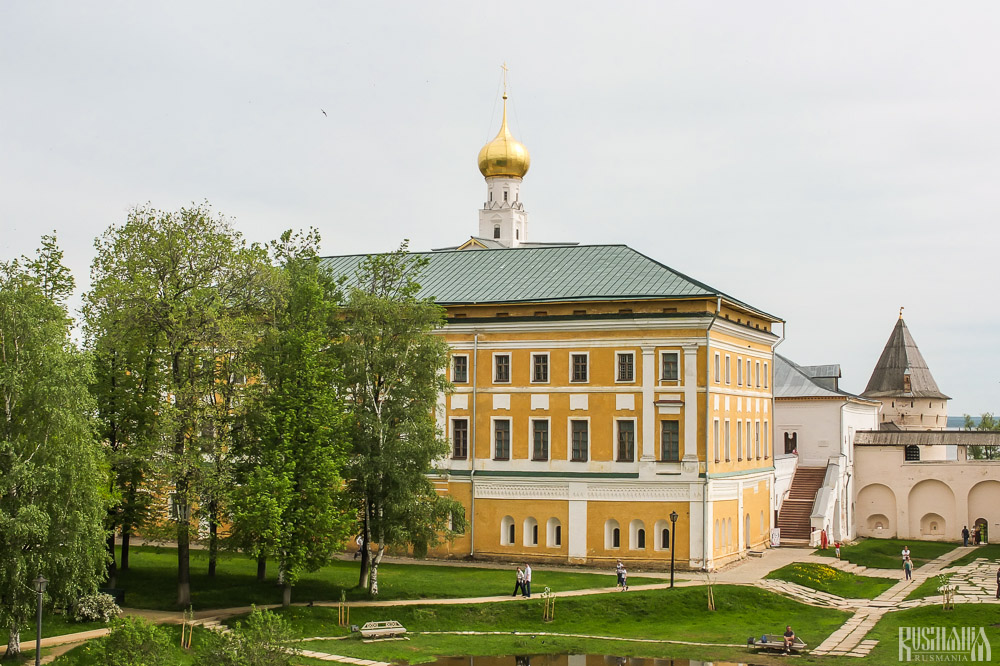
The Samuilov Building, located practically in the centre of the kremlin, dates from the 17th century but extra stories were added in the 18th century. Originally built as the metropolitan's chambers, it now holds the kremlin's main museum. It includes a gallery of Russian painting from the 18th to early 20th century and an exhibition hall on ancient Russian culture. Several temporary exhibitions on various themes are also held here.
Miracle-Image of the Saviour Church
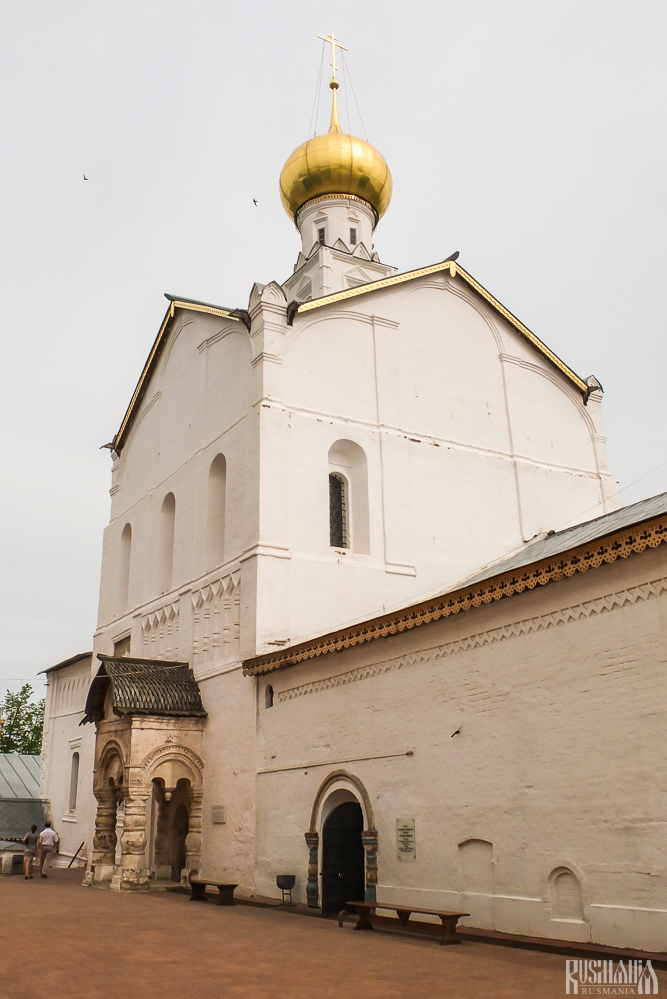
The Miracle-Image of the Saviour Church was built next to the kremlin walls in 1675 to serve as one of the main buildings in Metropolitan Jonah's new residence. It is built onto the White Chambers which housed the metropolitan's palace and a refectory. Above this is the church decorated with frescoes painted in 1675 by masters from Yaroslavl which have survived to this day. On top of the building stands a single golden dome.
White Chamber (Museum of Church Antiquities)
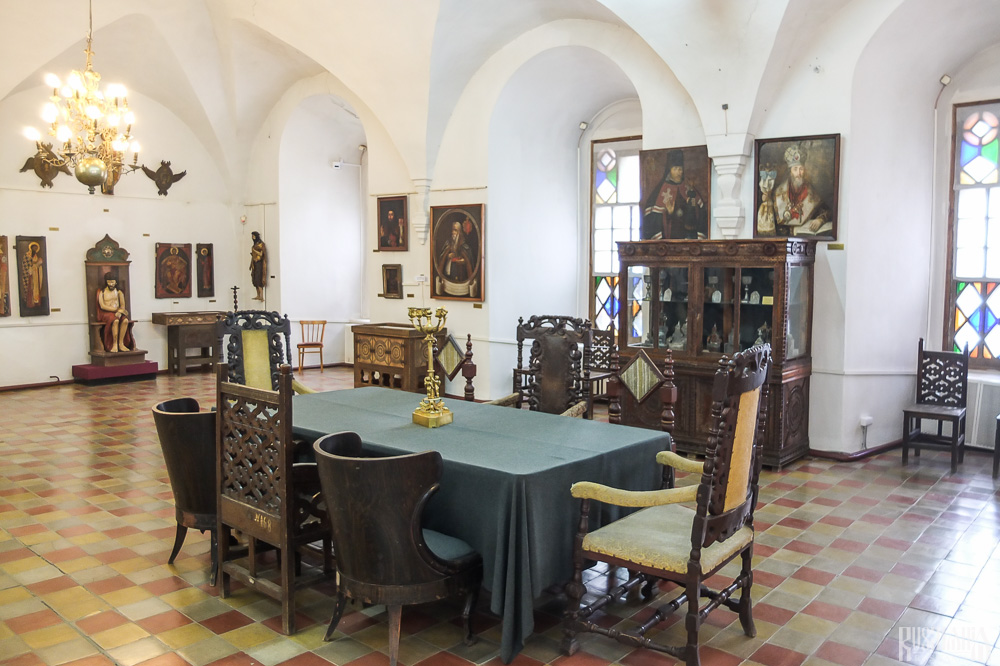
Immediately next to the Miracle-Image of the Saviour Church is the White Chamber of the Rostov Kremlin, which dates from between 1670 and 1680. The chamber now holds the Museum of Church Antiquities, which exhibits items which were used in church services over the centuries when the Rostov Kremlin was still a religious centre.
Red Chamber (Bells and Porcelain Exhibitions)

The building known as the Red Chamber which is situated in the corner between the Samuilov Building and St John the Theologian's Gate-Church and was built between 1670 and 1680. Today the chamber is now used for exhibits and expositions, including exhibits on the bells used in the Yam postal system, porcelain goods from the 18th - 20th centuries, Russian 19th and 20th century landscape paintings and the history of Rostov. The ground floor of the chamber holds temporary expositions.
St Gregory the Theologian's Church
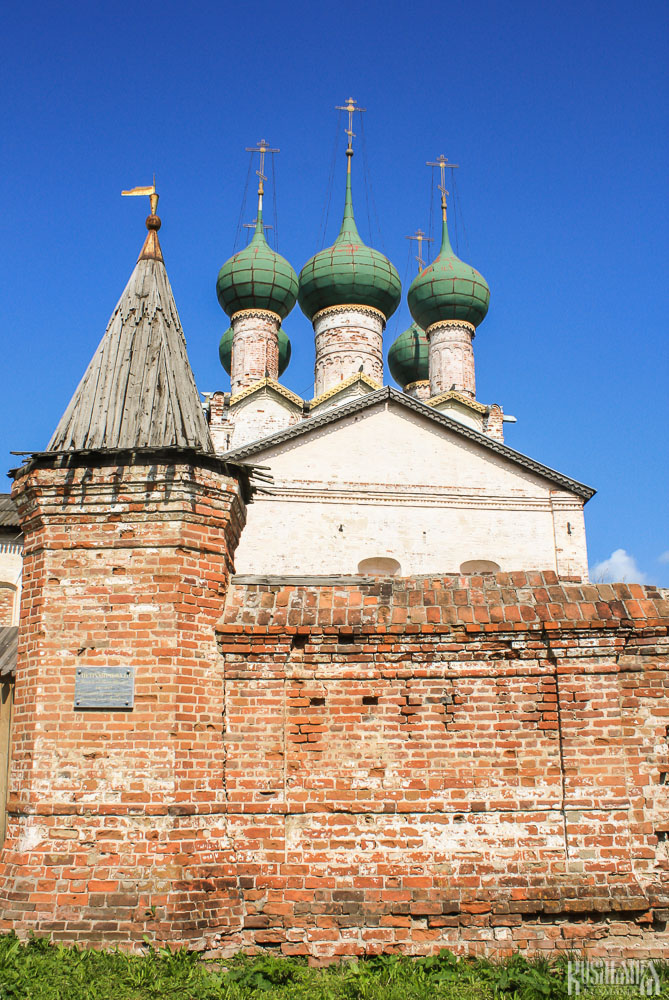
The southern part of the kremlin is known as the Metropolitan's Gardens, but was once the Grigorievsky Zatvor Monastery where St Stephen of Perm lived as a monk in the 14th century to prepare for his missionary work to convert the Komi people to Orthodoxy. The monastery was dissolved in the early 18th century but its main church remains - St Gregory the Theologian's Church. The church dates from the 1670s and is similar in style to the other churches in the kremlin, but slightly less decorated, with five green domes topped with elongated crosses.
| Location | historical centre of Rostov |
|---|---|
| Website | http://rostmuseum.ru/ |
| Clock | 10:00 - 17:00, daily except 1 January. Walls and churches open from 1 May to 1 October. |

 History
History